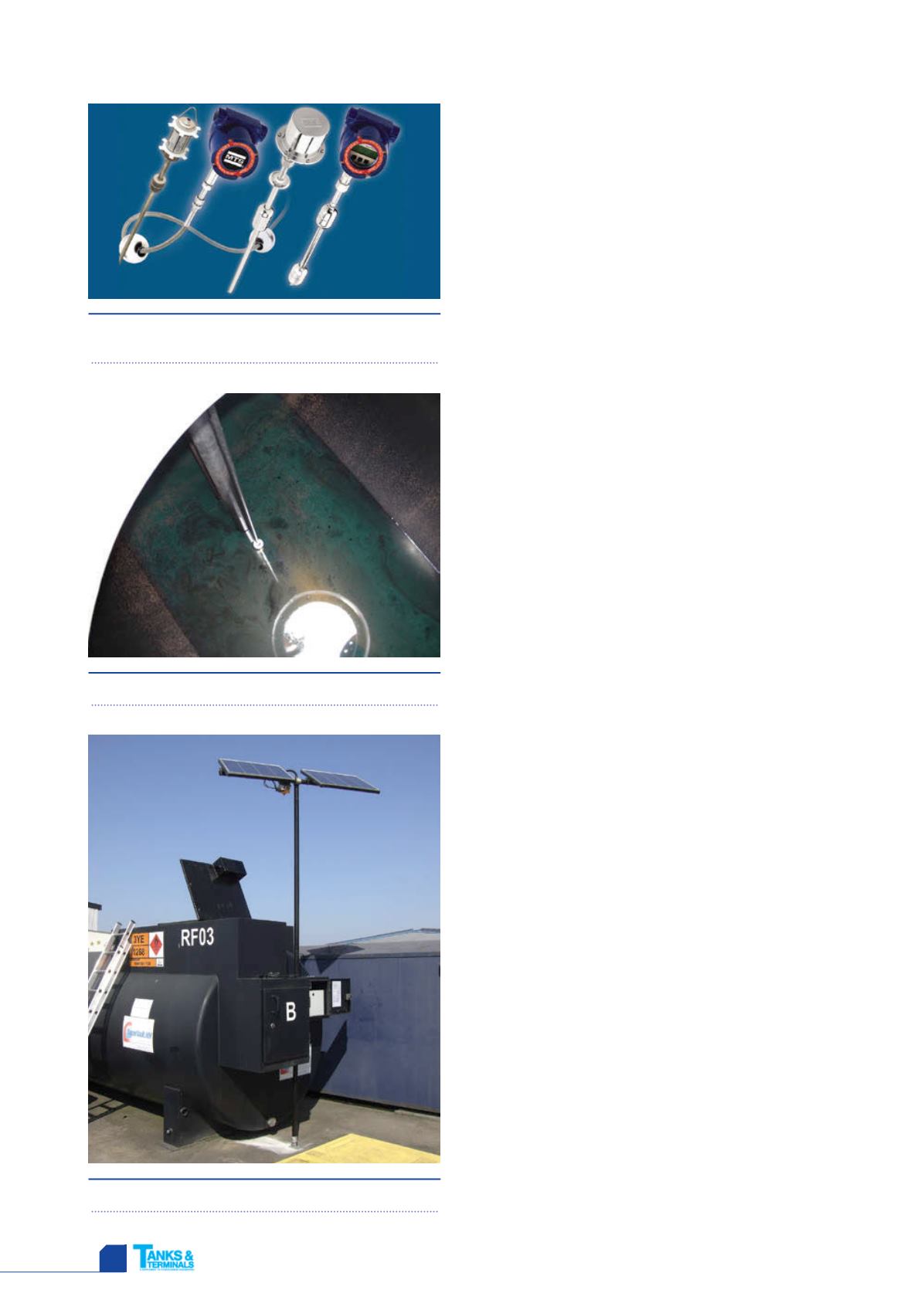
HYDROCARBON
ENGINEERING
48
company began the roll out of a fully automated asset
management system. Using this system, Refuels staff would
be much better able to monitor fuel inventory levels on an
ongoing basis, thanks to a data stream that detailed the
volume of fuel being stored at each of its many sites, the
quantities that were being deposited at any particular time,
and via whom.
Each user of the new asset management system would
need to be identified using a transponder tag. This would
have to be authenticated prior to the depositing of fuel
into one of the company’s tank depots. The system would
also alert Refuels staff when a particular tank was
approaching its full capacity, so that emptying could be
arranged.
Uninterrupted operation
Since the storage tanks at Refuels’ decanting depots are
usually in remote locations, connection to the power grid
would not normally be feasible. In order to address this, the
electricity needed to run the system at these locations
would be supplied through battery banks that were
connected to solar panels. This would safeguard against
system downtime and ensure uninterrupted operation. By
gathering together the information from each of Refuels
sites, real time monitoring of the company’s fuel assets
could be accomplished. The level sensing equipment inside
the storage tanks at these sites would be securely
connected to a cloud-based web portal and then accessed
by the company’s staff. The sensor units specified to support
this system needed to possess certain key attributes. High
degrees of reliability and repeatability would of course be
mandatory. Furthermore, with exposure to hazardous and
potentially explosive substances to be taken into
consideration, the sensing technology needed to fully
comply with the ATEX industry standard.
Level measurement
After looking at various options, Refuels decided to engage
with MTS Sensors, with its Level Plus® Model MG liquid
level transmitters being selected for the task. These high
accuracy devices are optimised for modern bulk liquid
storage implementations such as this. They are
straightforward to implement into storage vessels,
regardless of their shape or size. Among the major benefits
of the Model MG is its high accuracy, along with its
inherent ability to supply not only level, but also volume
and temperature measurement data.
The accuracy of the level transmitter is of clear value
to asset management tasks. For Refuels, it would mean that
inventory and billing records were correctly maintained, so
that each disposal would only be charged appropriately for
the exact volume of reclaimed fuel. It would be possible
for the system to be kept streamlined, thanks to the MG
transmitters’ ability to output gross and net volume
directly, thereby dispensing with the need for additional
apparatus to convert the data at remote sites (reducing the
capital costs involved, as well as keeping the power
consumption at these locations to a minimum).
MTS Sensors’ proprietary technology means that its
MG transmitters can precisely sense the position of an
Figure 1.
The Model MG magnetostrictive level
transmitter.
Figure 2.
Mixed fuel inside a Refuels storage tank.
Figure 3.
Refuels decanting depot.


